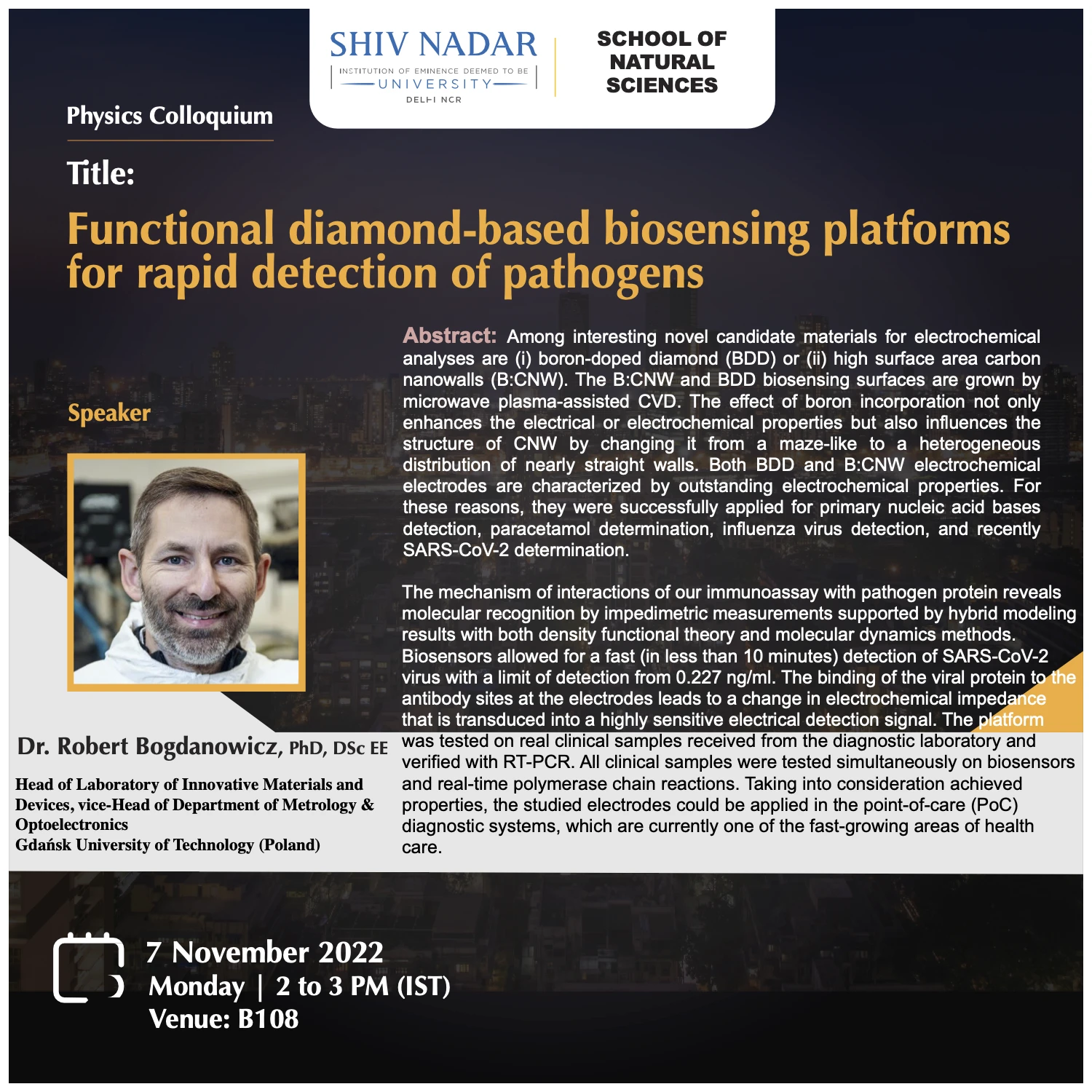Physics Colloquium By Prof. Robert Bogdanowicz
The Department of Physics, School of Natural Sciences, cordially invites you to a colloquium as per the following schedule:
- Title: Functional diamond-based biosensing platforms for rapid detection of pathogens
- Speaker: Prof. Robert Bogdanowicz
(Head of Laboratory of Innovative Materials and Devices,
vice-Head of Department of Metrology & Optoelectronics
Gdańsk University of Technology (Poland))
- Date of seminar: 7 November 2022 [Mon]
- Time: 2 to 3 PM
- Venue: B108
- Abstract:
Among interesting novel candidate materials for electrochemical analyses are (i) boron-doped diamond (BDD) or (ii) high surface area carbon nanowalls (B:CNW). The B:CNW and BDD biosensing surfaces are grown by microwave plasma-assisted CVD. The effect of boron incorporation not only enhances the electrical or electrochemical properties but also influences the structure of CNW by changing it from a maze-like to a heterogeneous distribution of nearly straight walls. Both BDD and B:CNW electrochemical electrodes are characterized by outstanding electrochemical properties. For these reasons, they were successfully applied for primary nucleic acid bases detection, paracetamol determination, influenza virus detection, and recently SARS-CoV-2 determination.
The mechanism of interactions of our immunoassay with pathogen protein reveals molecular recognition by impedimetric measurements supported by hybrid modeling results with both density functional theory and molecular dynamics methods. Biosensors allowed for a fast (in less than 10 minutes) detection of SARS-CoV-2 virus with a limit of detection from 0.227 ng/ml. The binding of the viral protein to the antibody sites at the electrodes leads to a change in electrochemical impedance that is transduced into a highly sensitive electrical detection signal. The platform was tested on real clinical samples received from the diagnostic laboratory and verified with RT-PCR. All clinical samples were tested simultaneously on biosensors and real-time polymerase chain reactions. Taking into consideration achieved properties, the studied electrodes could be applied in the point-of-care (PoC) diagnostic systems, which are currently one of the fast-growing areas of health care.

Share this: